As parents we always have our phones handy and ready to film our kid’s next highlight moment. However, we receive TONS of footage from parents that are filming these moments while hold their phone upright. This is terrible waste of video, for a variety of reasons, some technical and some aesthetic.
Here’s the Aesthetic argument and it’s pretty simple… We, as humans, see the world horizontally, and make use of our peripheral vision. That’s why TVs and Computer monitors are setup in landscape mode. It was only the introduction of social media, smartphones and lazy people have resulted in people holding their phone upright
If you are filming at 1080p resolution you are filming at 1920 x 1080 pixels, that is the equivalent of 2,073,600 pixels!!!! So when you film holding your phone SIDEWAYS (Horizontal) like a TV, and zoom to the correct level, you are going to get the benefit of using ALL those two million pixels to capture a great image.
However if you hold that same camera upright (portrait) and film that same game action, you effectively lose TWO THIRDS (or more) of your image quality.
Consider the following framing:
Original Video
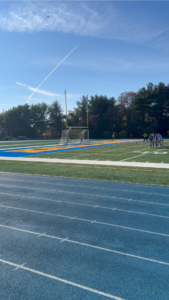
Actual Target
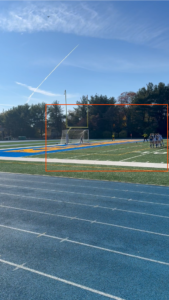
Wasted video pixels
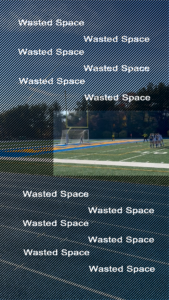
In the example above, this parent really only used about 20% of the entire frame to capture the action.
And when that is placed into a 1080p video it will look something like this:
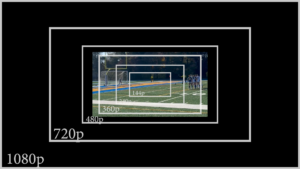
Stretching that small video to fill the 1080p frame looks like this.
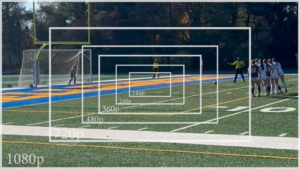
To the naked eye and especially when looking at this on your phone, you may not see any problem, but when zooming in just a touch further you can see that players look more like minecraft characters than actual people.

Here’s a more technical explanation:
When filming sports in portrait mode, a significant drawback is the inefficient use of frame space. This orientation leads to several issues that can compromise the quality and effectiveness of your sports footage:
1. Excessive Vertical Space
- Sky and Ground Overload: Portrait mode often captures an unnecessary amount of sky above and ground below the actual action. This wasted space could be better utilized to showcase the game’s dynamics.
- Reduced Focal Area: The vertical orientation limits the horizontal space where most of the action occurs, forcing you to choose between capturing a player’s full body or the broader game context.
2. Missed Action and Context
- Limited Field of View: Sports typically unfold horizontally across a field or court. Portrait mode severely restricts your ability to capture the full scope of plays, potentially missing crucial moments happening just outside the frame.
- Loss of Strategic Elements: Important aspects like player positioning, team formations, and off-ball movements are often cut off, diminishing the viewer’s understanding of the game’s strategy.
3. Distracting Elements
- Irrelevant Details: The extra vertical space often includes distracting elements like other spectators, sideline equipment, or empty stands, which can draw attention away from the main subject.
- Difficulty in Focusing: With more vertical space to manage, it becomes challenging to keep the primary action centered and in focus throughout the recording.
4. Inefficient for Analysis
- Limited Tactical View: Coaches and players reviewing footage find portrait mode less useful for analyzing plays, as it fails to show the full tactical layout of the game.
- Restricted Player Tracking: Following a player’s movement across the field becomes more difficult, often resulting in jerky camera movements as you try to keep the subject in frame.
5. Post-Production Challenges
- Editing Limitations: The excess vertical space makes it harder to crop or reframe the video effectively without losing important elements of the action.
- Awkward Transitions: When compiling highlights or creating a montage, transitioning between portrait mode clips can be jarring and unprofessional.
By opting for landscape mode, you ensure that every pixel of your frame is dedicated to capturing the essence of the sport. This orientation allows for a wider field of view, better composition, and a more immersive viewing experience that truly does justice to the dynamic nature of athletic events.
Remember, in sports videography, the goal is to capture the full scope of the action. Landscape mode helps you achieve this, ensuring that your footage is not just a record of events, but a compelling visual narrative of the game’s excitement and your child’s athletic achievements. AND when you are compiling a highlight video, you’ll have far more fidelity for the video editor to zoom and crop later without sacrificing quality, to ensure your athlete is getting all the attention.
